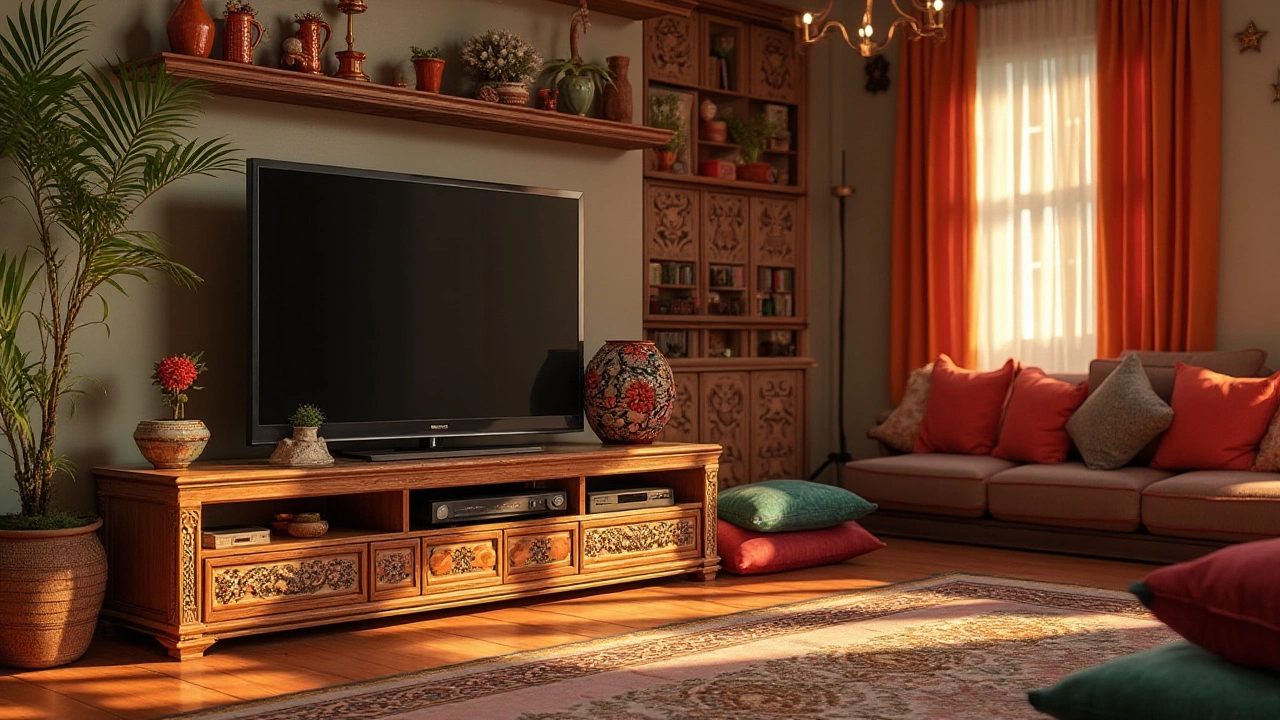Entertainment Setup: TV, Seating, and Coffee Table Basics
Got a room that needs a media makeover? You don’t need a designer to pull it off. Start with three things that make or break a good entertainment setup: the TV, the seating, and the coffee table. Get these right and you’ll have a living area that looks put together and feels comfortable.
Pick the Right TV Size and Position
First thing’s first—how big should your TV be? A quick rule is to sit about 1.5 to 2.5 times the diagonal screen size away. If you’ve got a 55‑inch screen, sit 6‑9 feet back; a 65‑inch screen wants 8‑10 feet. Measure your room’s viewing distance and match the TV size to that number. Don’t forget the height. Eye level when you’re seated is ideal, usually around 42‑48 inches from the floor. Adjust the stand or mount accordingly, and you’ll avoid neck strain.
When it comes to placement, keep the TV away from direct sunlight to reduce glare. If you’re using a wall‑mount, make sure the bracket can handle the TV’s weight and that the wall studs are solid. A low‑profile mount keeps the look sleek, while a stand gives you extra storage for consoles or gaming gear.
Match Seating and Coffee Table to Your Space
Now think about where the sofa goes. You want a clear line of sight to the screen, so avoid placing the couch behind a tall bookshelf or a wall that forces you to angle your head. If the room is narrow, a recliner or a low‑back couch works better than a bulky sectional. For larger rooms, a sectional or a corner couch can fill the space without feeling cramped.
The coffee table should sit about 12‑18 inches away from the sofa edge. This gives enough room to move legs while keeping drinks within reach. Choose a height that’s roughly the same as the sofa’s seat cushion – usually 16‑18 inches. If you have a reclining sofa, a lift‑top table can be handy for snacks and remote controls.
Rugs under coffee tables are optional but can pull the whole look together. Pick a rug that extends at least 24 inches beyond the sofa on each side; this anchors the seating group and adds texture. For a modern vibe, go for a low‑pile rug in a neutral shade. If you love color, a bold rug can become the focal point, just make sure the coffee table legs don’t sink into it.
Choosing the TV stand’s color is simpler than it sounds. If your room already has a dominant hue—say, grey walls or a navy sofa—pick a stand that matches or complements that shade. A white or black stand is a safe bet and works with most palettes. Wood tones add warmth, especially in rooms with lots of natural light.
Finally, think about matching. Your TV stand, coffee table, and side tables don’t have to be identical, but they should share a common material or finish. A walnut coffee table with a walnut TV console looks intentional, while a glass coffee table with a metal TV stand creates a sleek contrast.
With the right TV size, thoughtful sofa placement, and a well‑chosen coffee table and rug, your entertainment area will feel balanced and inviting. No need for expensive makeovers—just a few practical choices and you’re set for movie nights, gaming marathons, and relaxed evenings.
The Benefits of Using a TV Stand: Enhance Your Living Space
Deciding whether to put your TV on a stand involves considering both aesthetics and functionality. While wall-mounting TVs have gained popularity, TV stands offer flexibility in positioning as well as storage options. A well-chosen TV stand can also complement the overall design of a room and provide a practical solution for concealing cables and housing audio-visual components. This article explores the advantages of using a TV stand and suggests ways to choose the right one for your living space.





